Technology
Apple iPhone 16 Pro vs. iPhone 14 Pro: Upgrade time?
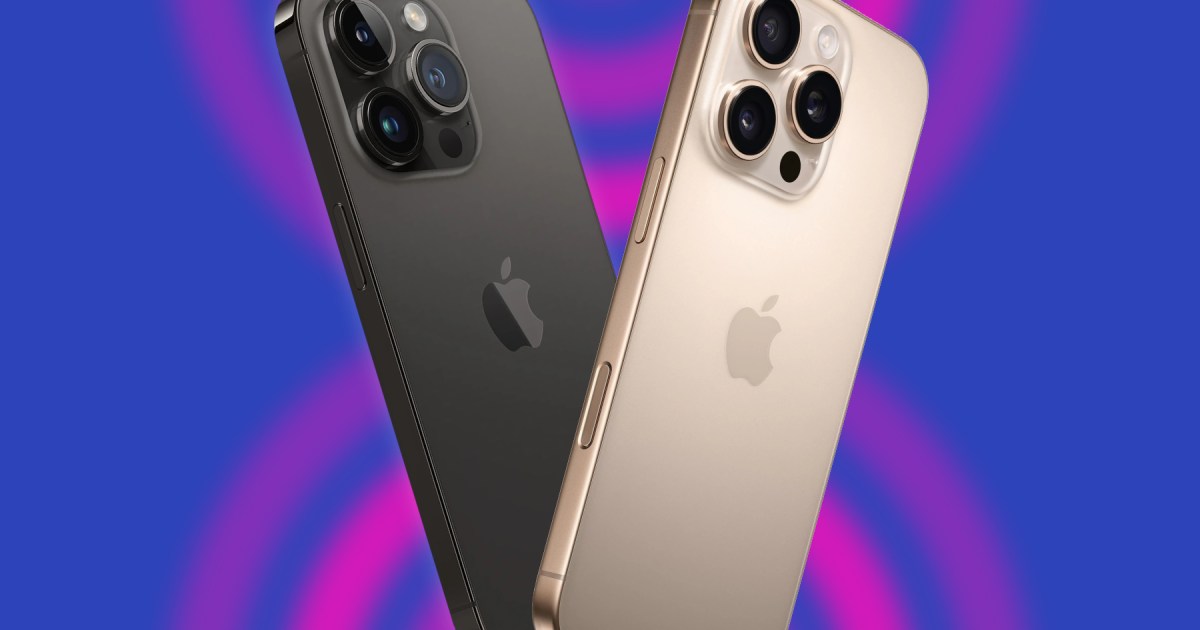
Apple’s smartphones are finally entering a new era — a phase where the software is driving as much innovation as the hardware. In fact, if one looks at the magnitude of changes that iOS 18 brings to the table with Apple Intelligence at the helm, the hardware enhancements pale in comparison. The Apple iPhone 16 Pro is at the forefront of that movement, thanks largely to the inclusion of Apple’s new AI. But is there any merit in holding on to an older iPhone?
The iPhone 14 Pro is the focus for most buyers’ “keep or jump” dilemma. A remnant of the Lightning port era, the iPhone 14 Pro continues to prove its mettle as a reliable warhorse with a terrific camera. But the kind of comprehensive changes across screen, silicon, charging, and software parameters introduced by the iPhone 16 Pro also make it a candidate for an upgrade.
If you’ve been holding on tight to your iPhone 14 and aren’t sure if there are enough meaningful advancements with the iPhone 16 Pro to warrant a spending spree, here’s a detailed breakdown to guide your upgrade decision. And if you’re interested in what we think about the rest of Apple’s line, we have reviews of the iPhone 16 and iPhone 16 Pro Max, too.
iPhone 16 Pro vs. iPhone 14 Pro: specs
| Specs | iPhone 16 Pro | iPhone 14 Pro |
|---|---|---|
| Size | 149.6 x 71.5 x 8.25 mm (5.89 x 2.81 x 0.32 inches) | 147.5 x 71.5 x 7.85 mm (5.81 x 2.81 x 0.31 inches) |
| Weight | 199 g (7.03 oz) | 206 g (7.27 oz) |
| Screen | 6.3-inch Super Retina XDR OLED
1206 x 2622 pixels ProMotion with 120Hz dynamic refresh rate Dolby Vision, 2,000 nits brightness |
6.1-inch Super Retina XDR OLED
1179 x 2556 pixels ProMotion with 120Hz dynamic refresh rate Dolby Vision, 2,000 nits brightness |
| Operating system | iOS 18 | iOS 18 |
| Build | Titanium with textured matte glass back | Stainless steel with textured matte glass back |
| Buttons | Action Button Camera Control |
Ring/Silent switch |
| Storage | 128GB, 256GB, 512GB, 1TB | 128GB, 256GB, 512GB, 1TB |
| Processor | Apple A18 Pro
Six-core CPU Six-core GPU 16-core NPU |
Apple A16 Bionic
Six-core CPU Five-core GPU 16-core NPU |
| Camera | Rear:
48-megapixel primary, f/1.8, OIS 48MP ultrawide, f/2.2, 120° FOV 12MP telephoto, f/2.8, 5x optical zoom Front: 12MP, f/1.9 aperture |
Rear:
48MP primary, f/1.78, OIS 48MP ultrawide, f/2.2, 120° FOV 12MP telephoto, f/1.78, 3x optical zoom Front: 12MP, f/1.9 aperture |
| Video | Rear:
4K, up to 120 fps Front: 4K, up to 60 fps |
Rear:
4K, up to 60 fps Front: 4K, up to 60 fps |
| Connectivity | Wi-Fi 7, dual-band
Bluetooth 5.3 |
Wi-Fi 6, dual-band
Bluetooth 5.3 |
| Ports | USB-C Gen 3.2
DisplayPort |
Lightning USB 2.0 |
| Water resistance | IP68 (maximum depth of 6m up to 30 minutes) | IP68 (maximum depth of 6m up to 30 minutes) |
| Battery & charging | Up to 23 hours video playback
45W fast charging 25W wireless charging via MagSafe 15W Qi2 wireless charging |
Up to 27 hours video playback
25W fast charging 15W wireless charging via MagSafe 7.5W Qi wireless charging |
| Colors | Black Titanium, White Titanium, Natural Titanium, Desert Titanium | Space Black, Silver, Gold, Deep Purple |
| Price | Starts at $999 | Starts at $999 |
iPhone 16 Pro vs. iPhone 14 Pro: design and display

There isn’t much to discuss here about any design overhaul, as the fundamental aesthetic language is identical. However, there are a few refinements that can only be felt when the two devices are held in hand. The iPhone 16 Pro is slightly taller and thicker than the iPhone 14 Pro, and a touch lighter too. That weight disparity predominantly has to do with the build’s material of choice. The latest flagship from Apple relies on titanium, which is lighter, more resilient, and better equipped to handle heat dissipation. The iPhone 14 Pro, on the other hand, has a stainless steel frame married to a matte glass shell.
Another crucial difference concerns the edges. The iPhone 14 Pro’s sides were quite sharp and the phone dug into the palm in quite an uncomfortable fashion. The iPhone 16 Pro takes a more rounded approach to the edges, making it cozier to hold, if not a day-and-night difference.
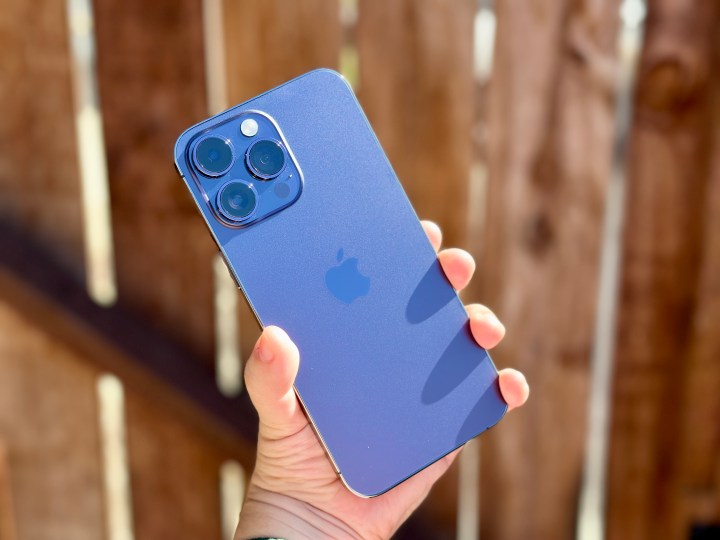
Apple has also slimmed down the bezels to accommodate a larger display on the phone. With the iPhone 16 Pro, you also get USB-C (Gen 3 port with Display Port support) with 10Gbps output as it ditches the Lightning Port (USB Gen 2) on the iPhone 14 Pro. In a nutshell, you get faster data transfer bandwidth and liberation from the dongle life.
The ingress protection is identical across both phones at an IP68 level, but the color options vary. The iPhone 16 Pro serves up a new Desert Titanium look that’s somewhat inspired by the gold trim on the iPhone 16 Pro, but the latter’s signature Deep Purple is gone. The rest of Apple’s latest options include silver, white, and black.
Another core difference, as mentioned above, is the display. The iPhone 16 Pro has a 6.3-inch panel, up from the 6.1-inch OLED screen on the iPhone 14 Pro. The rest of the attributes, such as pixel density, peak refresh rate, and brightness output remain identical. Apple says the latest iteration of Ceramic Shield on the iPhone 16 Pro is twice as strong, while the OLED panel’s brightness can drop to as low as 1 nit, which is technically great news from the lens of power efficiency.

Another crucial change is the introduction of two extra buttons on the iPhone 16 Pro that replace the mute switch on the iPhone 14 Pro. The Action button has already become a favorite of folks for folks looking to execute tasks or even shortcuts with the press of a button.
We also get the Camera Control, a physical button with a capacitive side to it. It’s a camera shutter in spirit, but can do a lot more. Using slide gestures, it can also handle adjustments like ISO or zoom level, among other camera controls.
iPhone 16 Pro vs. iPhone 14 Pro: camera
For users deep into video capture and engaged in professional workflows, the latest from Apple offers plenty. Both phones rely on a mostly identical 48-megapixel main camera and a 12MP zoom camera, but the iPhone 16 Pro takes things up a notch by upgrading the 12MP ultrawide lens to a 48MP sensor.

Another crucial upgrade is the inherent zoom architecture. The iPhone 14 Pro has a 3x optical range using a lens tunnel system for zooming. The iPhone 16 Pro reaches a 5x optical zoom range, thanks to the tetra prism lens architecture that was first seen on the iPhone 15 Pro Max. It also jumps to the Smart HDR 5 pipeline for more effective color contrast output.
On the imaging side, the iPhone 16 Pro enables full 48MP macro capture and can also take Spatial Pictures suited for viewing on the Apple Vision Pro headset. There are also new photographic styles on the table, alongside a new pad adjustment system to achieve the exact strength of a specific style. While that sounds appealing, it’s really the video capture side of things where the iPhone 16 Pro races into an altogether different league.
To start, the rear camera can now shoot 4K Dolby Vision videos at both 100 frames per second (fps) and 120 fps, and the results look incredible. Of course, for users who like more control over their video edits, the phone also opens the doors for log capture (with support for the Academy Color Encoding System), something the iPhone 14 Pro misses out on.

Apple has also armed the iPhone 16 Pro with four studio-quality mics, and they play a supremely important role. Apple claims they deliver more true-to-life sounds. The trick in question is audio mixing. Essentially, when you shoot a video, you can pick between directional audio presets like in-frame, studio, and cinematic. These presets let users focus on a certain audio sources in their video to highlight and emphasize specific inputs.
iPhone 16 Pro vs. iPhone 14 Pro: performance and software
The biggest shift between the iPhone 14 Pro and its 16-series counterpart is the processor, which not only stands out based on hardware merits, but also opens the doors for an entirely new software experience courtesy of Apple Intelligence.

Now, depending on how excited you are about AI, you may or may not make an upgrade choice, but here’s the lowdown. The A16 Bionic in the iPhone 14 Pro is based on TSMC’s 4nm process, and it serves a six-core CPU and a five-core graphics engine. The iPhone 16 Pro’s A18 Pro, built atop the newer 3nm node, packs six graphics cores.
The lift in processing firepower stands at 30%, while the GPU performance is improved by 40% this time around. Even compared to the mighty A17 Pro in the iPhone 15 Pro, Apple is touting a two-fold gain in hardware-accelerated ray tracing performance in games. It’s just that there are only a handful of games out there that can push ray tracing on the new and improved flagship iPhone.
Now, both iPhones have already received the iOS 18 update, but the experience is going to be quite different. The biggest upgrade is Siri interactions, which are not only a lot more natural, but also dig deeper into apps for seamless integration to get work done. It can even handle multimedia content editing using voice commands.

That means not only can Siri more efficiently perform tasks across different apps (both in-house and third-party), but it can also look into the details stored by these apps and accordingly respond to user queries. Additionally, when it can’t handle certain queries, they will be offloaded to OpenAI’s ChatGPT.
There’s a lot to unpack. The Notes app gets Writing Tools that let you handle rewrites, corrections, formatting, and summarization with a single click. AI smarts have also been extended to the Mail app, where they enable email summarization as well as smart reply suggestions.
App notifications are also intelligently brought together, summarized, and passed through focus filters. It works really well, though the system takes a few days to assess the app interaction habit before it can fine-tune the notification behavior. Another cool perk is automatic transcription and voice notes that can also be summarized with a single click.
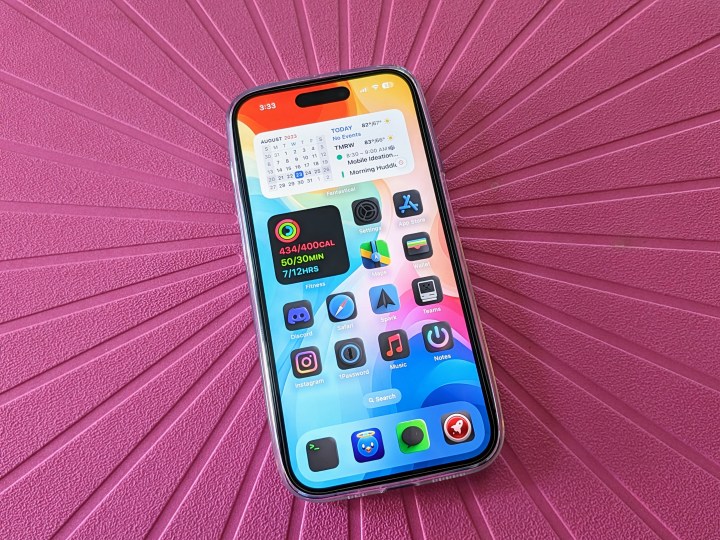
On the more fun side of things, users will be able to convert rough sketches into beautiful drawings with a simple highlight and selection gesture. The Image Playground feature brings text-to-image facility across different places, including Messages.
Also, for users who often run into the need to look up Apple’s product guides online, Siri will save them a browser trip. The virtual assistant has ingested those guides and will offer step-by-step instructions right in the dialog box. Another cool upgrade is Screen Awareness, which lets the AI assistant take a peek at the onscreen content and answer contextual queries.
Apple Intelligence really is a big difference here — but it’s worth remembering that Apple Intelligence isn’t available yet, even on iOS 18. Instead, it will launch with iOS 18.1.
iPhone 16 Pro vs. iPhone 14 Pro: battery and charging
Among the most notable quality-of-life upgrades offered by the iPhone 16 Pro are improved mileage and faster charging. The iPhone 14 Pro could manage 23 hours of video playback, which translated into a single day of charge in the iPhone 14 Pro’s real-life use. The iPhone 16 Pro falls a bit short of that; in testing, it didn’t make it a full day without needing to be topped off. It would burn through 80% of battery life in roughly 10 hours, with only four to four and a half hours of active screen time.
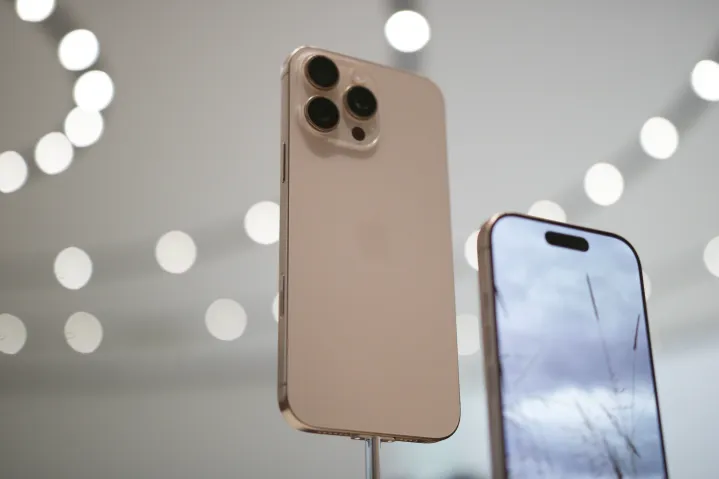
As far as charging goes, the iPhone 16 Pro can hit 50% life in just half an hour. Apple has also boosted the MagSafe output for its latest flagship. The iPhone 16 Pro can reach a MagSafe power delivery peak of 25 watts when paired with a 30W brick, while the iPhone 14 Pro could only muster 15W for juicing up the lithium-ion unit packed inside its glass-metal chassis.
iPhone 16 Pro vs iPhone 14 Pro: availability and price
The Apple iPhone 16 Pro is now available. The base model of the phone will set you back $999, with more storage carrying higher costs and rising all the way to a 1TB option. The Apple iPhone 14 Pro is similar, with the same storage options and an initial starting price of $999.
However, given the latter’s older age, it’s likely you’ll find the iPhone 14 Pro at a much lower price than the newer flagship. During sales periods, it could be significantly so, making it a much more attractive option to those looking for a bargain.
iPhone 16 Pro vs. iPhone 14 Pro: should you upgrade?
The Apple iPhone 16 Pro, as mentioned above, is pushing the envelope with both software- and hardware-side innovations. But that also begs the question — is the iPhone 14 Pro a laggard that demands an upgrade just two years into its product life?

Well, the answer depends on how much utility you are going to get out of the exclusive iPhone 16 Pro perks.
The biggest differentiator, of course, is Apple Intelligence. The AI-driven overhaul of iOS 18 puts Siri and next-gen machine learning capabilities into every corner of the iPhone’s software. And over time, those AI conversations — especially Siri integrations — will appear inside third-party apps, as well. Ultimately, it will boil down to how much one has grown weary of the boring iOS experience and seeks to experience what a next-generation AI-driven experience feels like.
Then we have the camera chops. Now, the iPhone is still one of the nicest smartphone camera systems out there, and that applies to the iPhone 14 Pro as much as the iPhone 16 Pro. Is the newer phone better? Yes. Is it a big enough gulf that you’ll feel like the older phone is missing out? That’s less likely.
However, if you intend to push your phone in terms of ultrawide capture and, more importantly, videos that try to challenge a DSLR, the enhanced zoom and high-fps Dolby Vision perks will really light up a social media feed with stunning samples.

Apple has kept the asking price the same, which is great news and makes the upgrade even more compelling. For those who can score a good trade-in deal and absorb the deficit hit on their wallet, the iPhone 16 Pro is absolutely worth the jump. For the rest, the iPhone 14 Pro is still enough to last at least another year, or two, with ease.
Technology
At 50, this classic horror movie is still cinema’s ultimate nightmare


Earlier this week, Variety published a list of the 100 best horror movies ever. Sitting at the top, like an exhumed corpse festering in the brilliant midday sun, was The Texas Chain Saw Massacre. This was not a controversial choice on the publication’s part, not in the year of our unholy lord of darkness 2024. Tobe Hooper’s deranged thriller, which roared into theaters 50 years ago, has been rising in critical esteem for decades, its reputation as a truly great movie — rather than merely a deeply upsetting and effective one — steadily cementing over the last half-century. Time, in other words, has been very kind to a savage, scandalous act of grindhouse exploitation once considered so shocking, it was banned in multiple countries. Yesterday’s outrage machine has become today’s lionized classic.
For as much as the movie deserves every drop of overdue recognition it’s increasingly earned, it’s still a little unusual seeing The Texas Chain Saw Massacre canonized by mainstream arbiters of taste. The next two films on Variety’s list, The Exorcist and Psycho, have more commonly wrestled for the nebulous title of horror’s pinnacle. Both of those movies were plenty shocking and controversial in their time, of course. But like most historic hair- and knuckle-whiteners, they’ve lost a little of their transgressive power over the decades since, as the standard of what gets under the skin of the average moviegoer evolves. Generally speaking, they don’t traumatize like they used to. They’re safer — which, in a sense, makes them easier to enshrine as the Mona Lisas of their video store aisle.
The Texas Chain Saw Massacre is different. This is not a safe movie. Though it’s now widely recognized as a masterpiece, it’s not something you appreciate from a respectful distance, admiring its historic qualities like an anthropologist of B-movie artifacts. It’s an experience, undiminished by everything that’s come after it. The primal immediacy of Hooper’s achievement — the sheer demented intensity of his 83-minute assault on the senses — has not waned. The Texas Chain Saw Massacre will still mess you up. If it doesn’t, there might actually be something off about you.

John Larroquette provides the faux-true-crime narration of the opening scene — a dryly ominous introduction that frames the events to come as reenactments of real unspeakable crimes, which the wildly successful marketing campaign exploited. This is not a true story in any literal sense, though Hooper did base some of the violence on the very real mayhem of the serial killer Ed Gein. In a much more general sense, few films have felt more in touch with the madness of American culture, the evil lurking in our country’s heart and its forgotten corners.
Part of what remains so unnerving about the film, five decades later, is how it seems to straddle the line between a harsh, scraggly, almost documentary realism and something more hallucinatory. Even as Hooper rubs our noses in forensic evidence (retrospective glimpses of the horror to come — a devious device for triggering our dread early), he also begins to pull at the fabric of the reality he’s establishing, washing out the images, drowning out the audio with droning, atonal music. It’s as if the insanity of the Sawyer clan was already polluting the movie’s style, minutes before we’ve met a single one of them.

Rewatching the film, it’s striking how much its opening act functions as one long premonition of doom. Over and over again, Hooper seems to erect an existential “Turn back now” sign, giving his van of unlucky city slickers numerous warnings that something awful waits down the road they’re traversing. Hell, one of the abominable killers himself tries to warn them, in his own way, in a gas station scene that would become a cliché of the 1980s slasher movies Texas Chain Saw helped inspire. The early stretch of the film is littered with bad omens: roadkill, reports of violence on the radio, the roar of what just might be a chainsaw in the distance. Even the daily horoscope seems to be beaming in a red alert from the universe: “There are moments where we cannot believe what is happening is really true,” one of the kids reads aloud. She’ll grasp the meaning of those words when she’s hanging from a meat hook later in the afternoon.

So much has been written over the years about Leatherface’s iconic first appearance, that moment when he stumbles into a doorway without prelude or fanfare, and clocks someone dead with a hammer, before slamming the metal door behind him. It happens so fast, you can almost miss it. It’s like the “We’re gonna need a bigger boat” scene in Jaws, the multiplex phenomenon that opened a year later: a jump scare so unexpected and so off rhythm — a moment you can’t possibly anticipate — that it scrambles your sense of security. Nearly half a century earlier, Boris Karloff got a star’s entrance as Frankenstein’s monster, slowly turning to face the camera and reveal his hideous face. The Texas Chain Saw Massacre seemed to announce a scary new era of sudden lunacy, when the monster simply blips into our line of sight, too obscene for formal introduction.

The scene almost plays like a hole has been torn in the fabric of time and space, depositing something horrible and beyond reason. Who in their right mind thought we needed an origin story (nay, two!) for this brute? Leatherface is so much scarier as an evil that’s just suddenly there. Not a single one of the sequels, prequels, and remakes is essential. They all give us more than we need of this awful place, these unknowable monsters. They try to bring psychology into the matter, when the Sawyers — bloodthirsty emblems of American derangement — exist beyond the purview of diagnosis. The Texas Chain Saw Massacre is a complete thing. To continue what passes for its story is futile, because its power can’t be replicated. Hooper seemed to realize that, and took his own over-the-top sequel, the best one, in the only direction that made sense: black comedy.

All the mythology those mostly dire follow-ups would build upon is largely implied in the original. No one ever even identifies the Sawyers as cannibals; a couple ominous close-ups of cooking meat at the BBQ pitstop says it all, though, doesn’t it? That goes for the movie’s politics, too. The Texas Chain Saw Massacre is one of the most witheringly resonant movies ever made about the violent spirit of America, but it doesn’t do the interpretative work for you, the way so many modern festival-feted creepshows do. There’s a world of sociopolitical meaning in the one-line revelation that the Sawyers used to be factory workers before automation put them out to pasture. British censors certainly got the message, warning that the film might inspire something in the working class. Fearmongering? Of course. But you can’t say this isn’t a political movie. It just keeps its ideas draped in nightmare logic.

Another thing that’s easy to forget, if you haven’t seen The Texas Chain Saw Massacre in a while, is how elegant it is — especially for a film made on a shoestring budget and with such savage, unpretentious aims. The slaughterhouse ambiance of the film looms large in the imagination, but there’s nothing artless about how it’s put together; you could go shot for shot through Chain Saw Massacre, like Roger Ebert used to do with Citizen Kane and other art-house milestones in lecture halls, and find something to admire after every cut. It’s such a carefully, brilliantly assembled movie — maybe the ultimate example of how the best horror movies work your nerves with the how as well as the what of their dark vision.
It’s in the last half hour that the movie starts to feel truly wrong, like something you shouldn’t be watching, like something that short-circuits that old “it’s only a movie” rationale we use to get us through rough sledding. It’s not the violence, which never gets all that explicit (to the point where Hooper hilariously reasoned that he might be able to secure a PG rating for the film, can you even imagine?). It’s the way The Texas Chain Saw Massacre devolves into pure, primal emotion, as Sally runs and screams and pleads for what feels like a grueling eternity, all while her tormentors buffoonishly giggle like Hee Haw bit players.

In the pantheon of scream queens, there is Marilyn Burns and then there is everyone else. No one has seemed as believably destroyed by terror as she does here. The film runs less than an hour and a half, but that dinner table scene — all bulging eyes in extreme close up, all slapstick near-death — seems to go on forever. That’s because Hooper has locked us into Sally’s crucible, and offered a vision of insanity that feels realer than what movies ever offer. It’s hard to think, too, of a more iconic ending to a horror movie — that frustrated chainsaw ballet in the daylight, Sally laughing hysterically with a relief that tells you she’ll never be OK ever again, an abrupt cut to credits denying us the creature comfort of a denouement.
Yes, fear is subjective — one person’s phobia fuel is another’s sleeping pill, blah blah blah. You may have your own personal, idiosyncratic choice for scariest movie ever. (For this writer, no single moment in cinema is more irrationally petrifying than the Winkie’s diner scene in Mulholland Drive, which isn’t even a horror movie by the strictest definition.) But if we’re talking about consensus power to unsettle, there’s still nothing like The Texas Chain Saw Massacre. It simply doesn’t operate like a normal movie. It feels inherently touched by death from its opening frames. And it eventually cracks into a madness beyond plot or suspense — a total immersion into blinding panic and fear. It’s possible no movie has ever felt more like a nightmare. You wake up, but it’s still there, twirling like Leatherface in your head.
The Texas Chain Saw Massacre is currently streaming on Peacock, Tubi, Plex, and other streaming services. For more of A.A. Dowd’s writing, visit his Authory page.
Technology
The 100W Anker Nano hits all-time low of $30
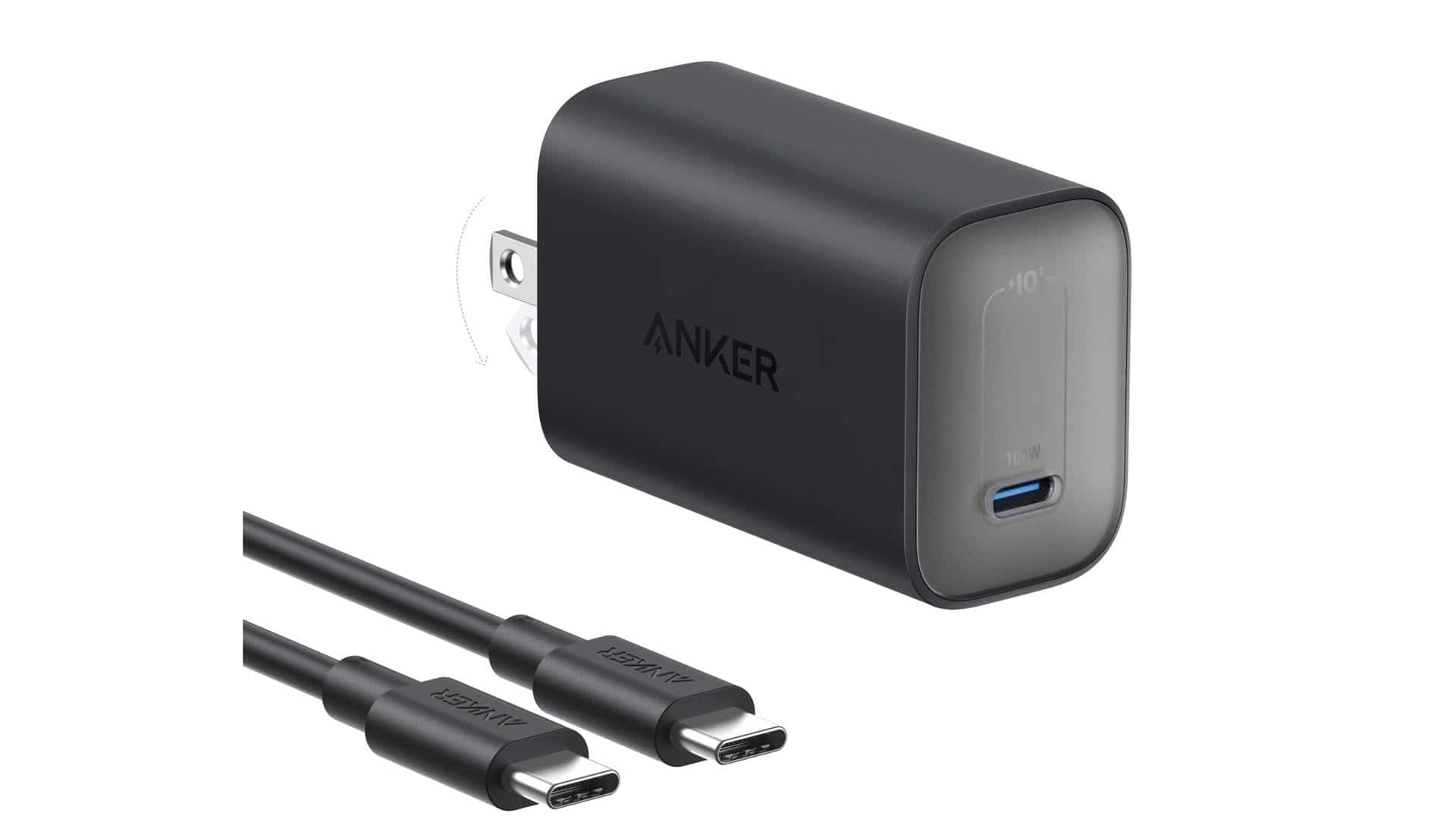
The Anker Nano has set the standard for tiny yet powerful chargers, and right now Amazon has a great deal on the 100W Anker Nano charger that’s a must-have. Regularly this charger would cost you $45 if you were paying the full price for it. However, you can currently grab it for $29.99 which is the lowest it’s ever been. This is for the 2024 model of the charger too, so it has Anker’s latest tech and security features for safe charging.

Now while this is a great deal as it’s the lowest this charger has been in the past 30 days, you do need to be an Amazon Prime subscriber to get this price. As for what makes this charger so good, let’s start with the size. The Anker Nano line of chargers is built on the belief that chargers should be compact and easily portable. The Anker Nano (even the 100W) is as portable as they come. That makes it super easy for you to toss it in your bag, purse, or even your pocket. To make things even easier, the prongs fold inward. So there’s nothing sticking out or getting in the way when you pack it.
The Anker Nano isn’t just about the compact size though. This particular charger has an output of 100W. So it’s perfect for devices like Macbooks, Windows laptops, and handheld gaming PCs like the Steam Deck, and ROG Ally X. All of which require a power output with a higher wattage. You also don’t have to worry about buying a USB-C cable when getting this charger because Anker packages one with it. You can get the Anker Nano 100W charger in either white or black and both colors are on sale for the $29.99 price point for Prime members.
Servers computers
Dell Refurbished 10 Series Servers Specs | Powerful Refurb Servers for All Businesses | Great Deals
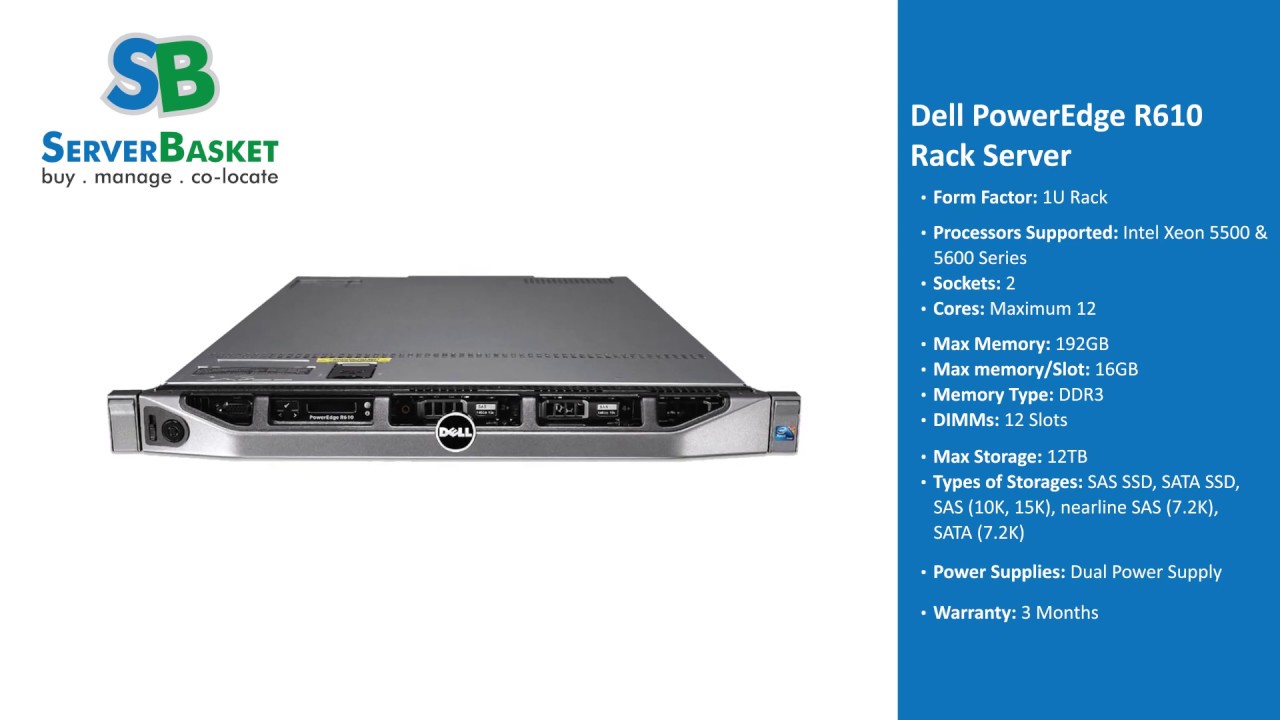
For complete information on any of the mentioned Server, please contact us at
Website: https://www.serverbasket.com
Email: Sales@serverbasket.com
Toll Free No: 1800 123 1346
Whatsapp: +91 8886001858
Invest your money in buying Dell Refurbished Servers and save a fortune by getting same level of performance at a discounted price. Dell Servers are market leaders and you can be assured of the premium quality you experience.
At Server Basket, we have a complete array of Dell 10 Series refurbished servers that can help you boost your business performance. Choose what suits you the best from the list of following servers:
Rack Servers: ( https://www.serverbasket.com/products/servers/refurbished-servers/dell-refurbished-servers/dell-used-rack-server/ )
Refurbished Dell PowerEdge R510 Rack Server
Refurbished Dell PowerEdge R610 Rack Server
Refurbished Dell PowerEdge R710 Rack Server
Refurbished Dell PowerEdge R810 Rack Server
Refurbished Dell PowerEdge R910 Rack Server
Tower Servers: ( https://www.serverbasket.com/products/servers/refurbished-servers/dell-refurbished-servers/dell-used-tower-server/ )
Refurbished Dell PowerEdge T10 Tower Server
Refurbished Dell PowerEdge T310 Tower Server
You can use the Refurb Dell Servers for Virtualization, Deployment, Testing, Storage, Graphic Intense Workload, Heavy Data Rendering and etc.
Check the maximum potential each Dell 10 series used servers has and reach out to us for customization. We can tailor make the configuration of any Dell Server as per your requirement so that you do not have to spend extra or compromise on performance. .
source
Technology
Boeing to lay off 17,000 employees to ‘stay competitive’
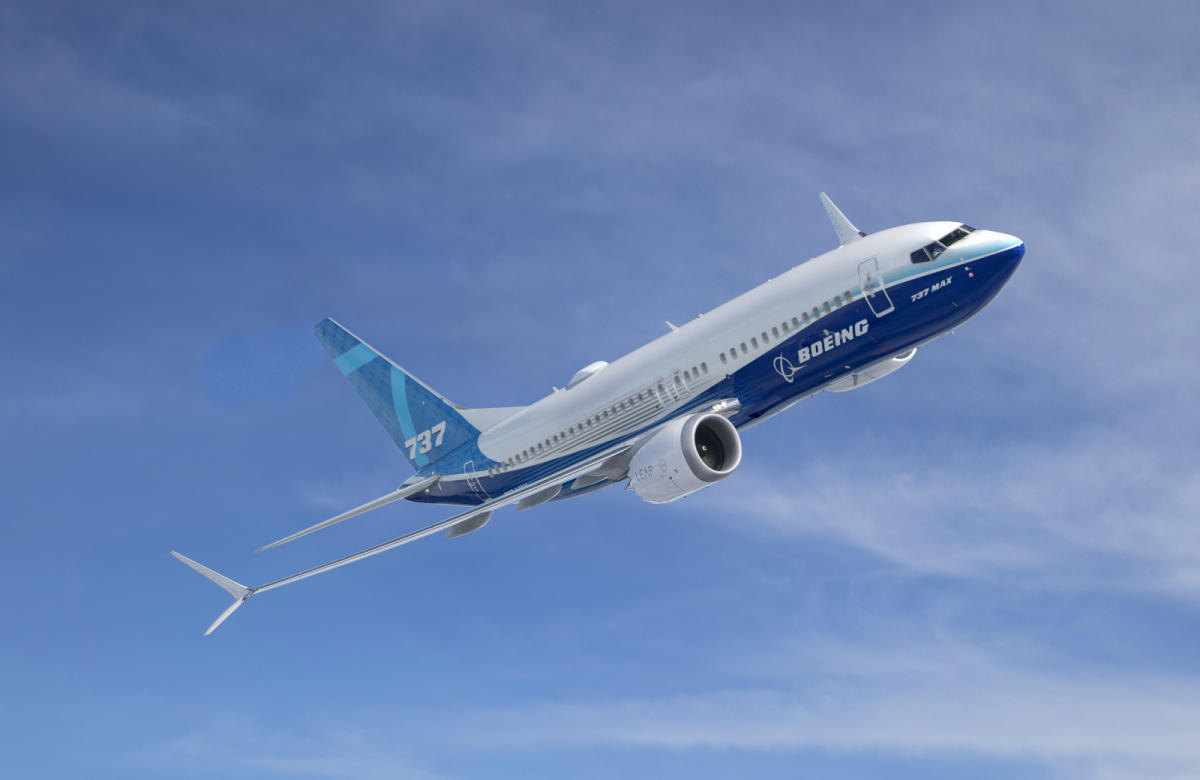
In a message to employees, Boeing President and CEO Kelly Ortberg has announced that the company is reducing the size of its total workforce by 10 percent. That means Boeing is cutting roughly 17,000 jobs, including executives and managers, over the coming months. Ortberg, who only took the helm back in August, explained that the company has to “make structural changes” to ensure it can “stay competitive” and deliver for its customers over the long term.
Ortberg announced the upcoming layoffs in the midst of a machinist strike that had shut down production in most of Boeing’s plants, including the ones manufacturing its best-selling plane, the 737 Max. Around 33,000 union machinists are involved in the strike, which has been going on since mid-September. As AP explains, that’s had a big impact on Boeing’s pockets, since it gets paid for half of what a plane costs after it delivers a customer’s order.
In addition to the layoffs, Ortberg announced that Boeing will delay the development of its 777X planes due to the challenges it has faced in development, along with the ongoing work stoppage. It now plans to deliver the new wide-body planes in 2026 instead of 2025.
Boeing started 2024 having to ground some 737 Max 9 planes after an Alaska Airlines door plug blew off while it’s mid-flight. While there were no reported injuries, the Boeing plane had only been in service since November last year. In July, the company had agreed to plead guilty to a conspiracy to defraud the US government following two fatal crashed in 2018 and 2019 that killed 346 people. Boeing had also eaten hundreds of millions in losses as a result of Starliner’s delayed return from the International Space Station. The company’s first crewed flight was only supposed to last a few days, but hardware issues prevented it from sticking to the original timeline. In the end, the Starliner returned to Earth months later, without the astronauts it originally flew to the space station. Its crew will now come home on a SpaceX Dragon capsule in February next year.
Science & Environment
This niche AI play is seeing business growth rates that are triple the pace of the data centers
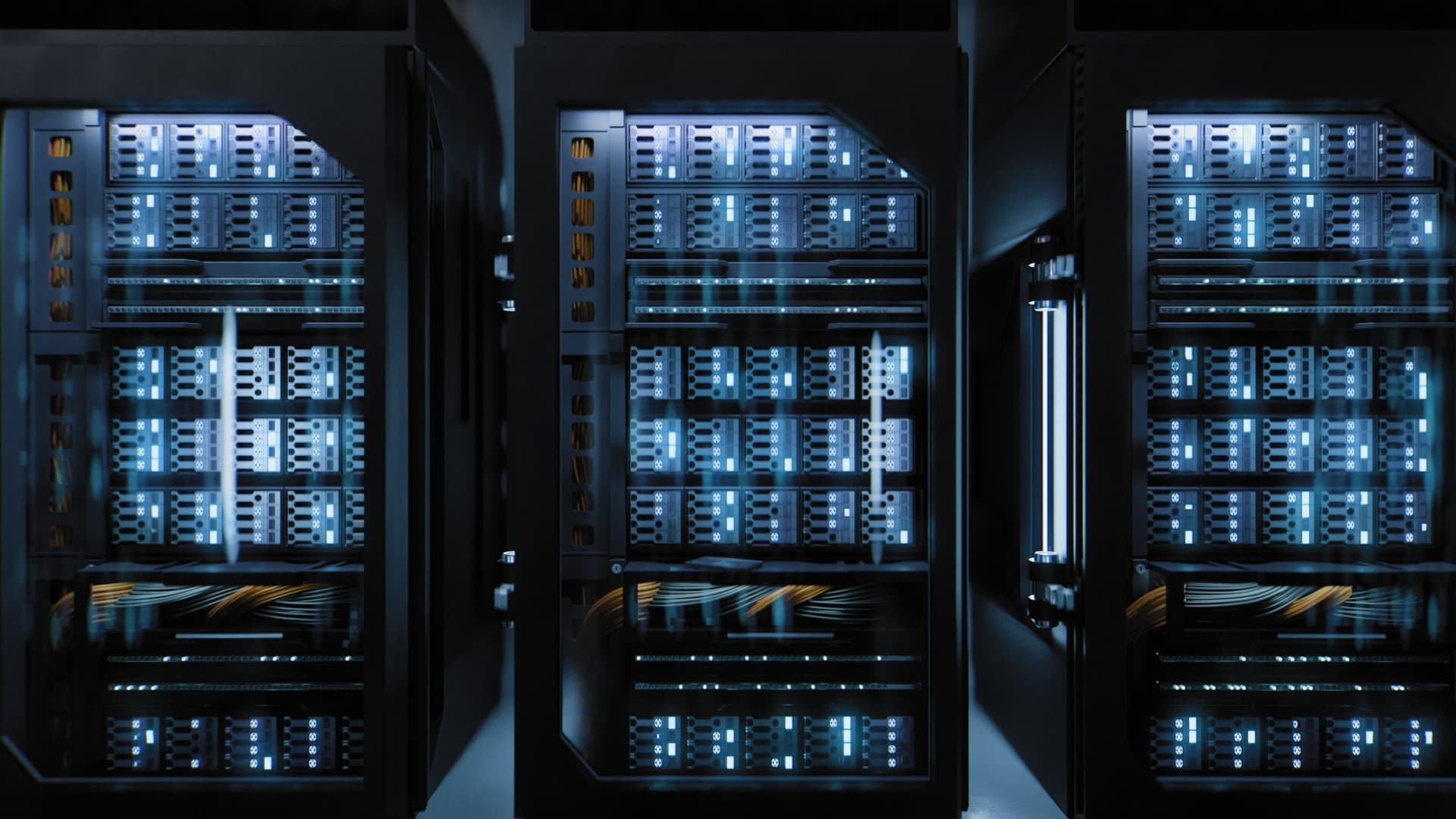
A large hallway with supercomputers inside a server room data center.
Luza Studios | E+ | Getty Images
As artificial intelligence fuels the boom in data center growth, investors are eyeing a new frontier: the companies keeping these digital powerhouses cool.
nVent Electric, Vertiv and Modine Manufacturing have seen their stocks soar in 2024, buoyed by partnerships with tech giants investing billions in AI infrastructure. Despite the gains, Wall Street believes these cooling leaders have room to run as the fast-growing data center market they serve desperately requires liquid cooling to operate effectively.
Shares of nVent are up 23% this year, while Vertiv and Modine have rallied 133% and 125%, respectively in 2024. Yet there’s been a lot of volatility in stocks with exposure to data centers. All three names experienced massive drawdowns that coincided with Nvidia’s sell-off on Sept. 3 — when the AI darling tumbled 10% in a single session — creating a buying opportunity, according to many analysts.
That’s because historically, data centers used air cooling to manage the heat generated by traditional cloud applications. But as the AI boom continues using new chips like Nvidia’s graphics processing units to train AI models, they’re generating high density computing power, consuming far more energy, and producing more heat in the process. This shift is forcing data center operators to rethink their cooling strategies to help servers run at peak efficiency, and liquid cooling is emerging as the method of choice given it’s 25 times more effective than air-cooling.
“The reality is data centers cannot run AI processing in any capacity without using liquid cooling,” said Dean Dray, analyst at RBC Capital Markets to CNBC. “The thermal dynamics of the heat generation in the chips have reached the stage where legacy air conditioning is no longer powerful enough for the concentrated heat that gets created.”
Triple data center growth
Vertiv and Modine are legacy air cooling players that entered the liquid cooling market through acquisitions, while nVent is a pioneer. Unlike traditional air cooling — which relies on air conditioners, fans and vents to blow cool air over racks of servers — the technology uses a liquid coolant to absorb and remove heat right where it’s generated.
“The need for liquid cooling is not cannibalizing the need for mechanical (air) cooling,” Matt Summerville, an analyst at D.A. Davidson said in an interview. Instead, he expects data centers will use a hybrid of legacy air conditioning and liquid cooling systems to protect IT equipment from heat damage and for overall environmental control in data centers.
Liquid cooling, still a nascent industry, is growing sales at a rate of 45% a year — three times faster than the 15% growth rate in data centers. The total addressable market for liquid cooling is roughly $3 billion, with about 5% of data centers using it, analysts said. They expect that to accelerate.
“The AI-driven side of the liquid cooling market is expected to be in 25% of all data centers by 2028,” Summerville said.
A liquid cooling pioneer
As one of the top five companies in the world involved in data center cooling, nVent, is very well positioned to benefit, William Blair analyst Brian Drab said.
The company has been in the liquid cooling business for well over a decade, giving it the time to refine and innovate its products. Originally invented 15 years ago for high-end mechanical equipment, nVent stumbled upon a major opportunity in data center cooling.

nVent shares year to date
“They invented the liquid cooling business,” RBC Capital Markets analyst Dean Dray said, describing how data center operators discovered nVent’s products were exactly what was needed to cool high-powered servers. This kicked off relationships that nVent has “with literally all of hyperscale players,” and quietly made it a key partner in designing and testing thermal solutions for every generation of GPUs and chips, he explained.
Dray said nVent is “very guarded” about those partnerships, but will eventually need to figure out how to “explain their market presence and all of the hyperscale players they’re doing business with to get investors comfortable that these relationships exist.”
The company’s core product is a coolant distribution unit — what Drab called the “brains of the liquid cooling system connected to the racks in the data center.” This state-of-the-art liquid cooling technology “knows how hot a chip is and delivers liquid to it – and it’s doing it with thousands of chips throughout the data center,” Drab explained. He has an outperform rating on nVent with an $80 price target, or nearly 10% upside from Friday’s close.
Currently, nVent’s total revenue exposure to data centers is 23%. Half of that comes from liquid cooling, which is growing more than 40% annually. The other half comes from the electrical equipment for data centers, which is growing 15% annually.
A strong backlog of business
Vertiv has a much larger exposure to liquid cooling, with 75% of its revenue tied to data centers. The company entered the market through the acquisition of CoolTerra in December 2023. Before that, it was primarily in legacy air conditioning.
Jefferies’ analyst Saree Boroditsky estimated Vertiv’s data center revenue could grow at a compound annual growth rate of 20% over the next four years, well above the 9% to 12% top line growth management projected at its December 2023 investor day.

Vertiv shares year to date
This week, Boroditsky initiated coverage of Vertiv with a buy and a price target of $125, or about 12% from where the stock closed Friday.
The Jefferies analyst expects Vertiv earnings to grow at 24% CAGR through 2027 given its “strong incoming backlog,” which could provide upside to 2025 estimates. Boroditsky also noted the company’s $5 billion balance sheet capacity, which could be used for acquisitions or share buybacks, providing more upside for the stock.
A newcomer to the space
Modine is a third standout that historically had a rapidly growing air-cooling business. The company recently made its way into liquid cooling. In the beginning of 2024, Modine purchased intellectual property assets of TMG Core, a specialist in liquid cooling technology to accelerate data center growth. Modine’s second purchase this year was the addition of Scotts Springfield Manufacturing, a manufacturer of air handling units, adding more products to its data center solutions portfolio.

Modine shares year to date
These acquisitions will help with Modine’s data center business, which is already on pace to grow about 50% in 2024 as management focuses on higher growth end markets like cooling solutions.
At its investor day on Sept. 11, Modine provided a forecast for top-line CAGR of 18% to 22% through fiscal 2027 in its climate solutions segment where the data center business is housed, above its previous target range of 15% to 20%.
A major reason behind the higher targets is the expansion of Modine’s partnerships with hyperscalers. The company recently signed a deal with its third major customer.
“Being able to continue to penetrate these AI pioneers is absolutely going to be key for Modine to maintain market growth on an organic basis,” Summerville said. He added, the company is broadening its reach with plans to serve the Asia Pacific market, where data center activity is ramping up.
Another catalyst for Modine is the company’s commitment to having a CDU available in the market by the end of its fiscal year in March. Summerville gauges, “early excitement around the launch of their cooling distribution unit” as big data center players bring more capacity online.
Following Modine’s investor day, Summerville updated his price target on Modine stock to $155 from $140, implying 15% upside from Friday’s close, while maintaining a buy rating on shares.
Servers computers
Ask Price| Dell PowerEdge 2900 Tower Server | Refurbprice
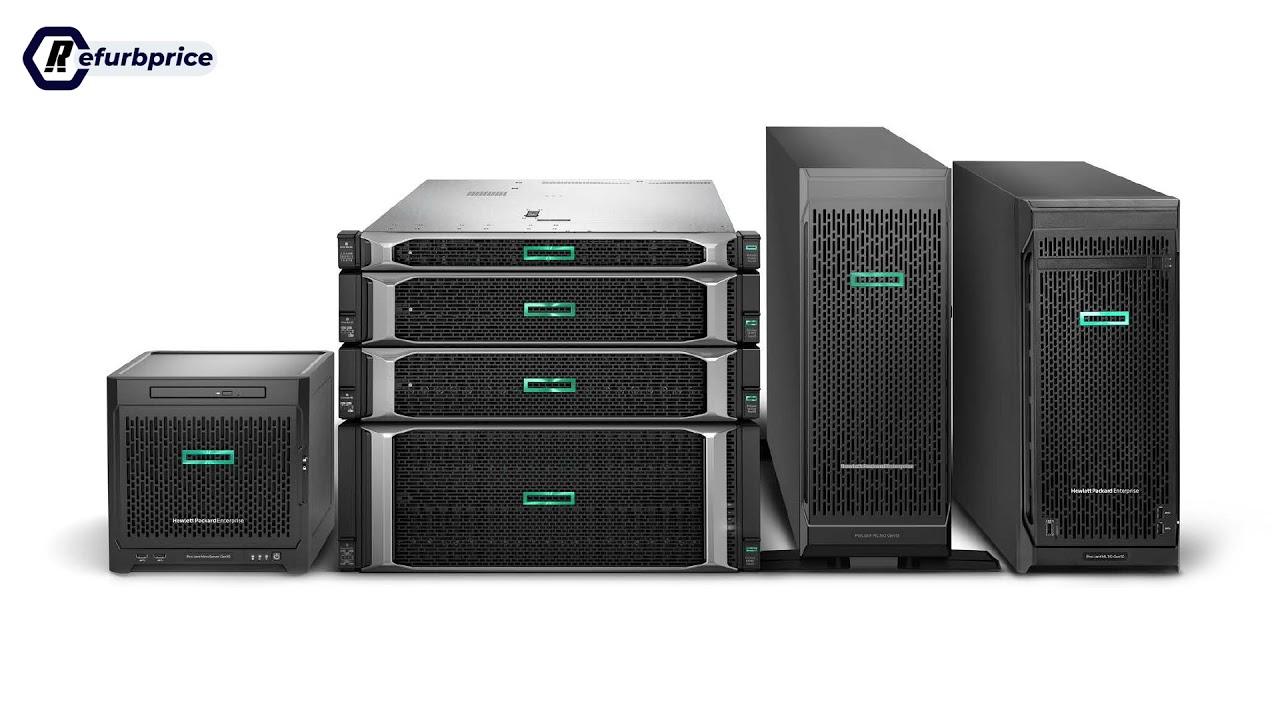
Are you Looking for Refurbished Tower Servers| Price List | Get Best Price
here all are different kinds of refurbished tower servers available in the markets. those Nowadays,
you can find tower servers based on the requirements your business. refurbprice allows you to buy refurb or new tower servers at the best price and low prices.
https://www.refurbprice.com/refurbished-dell-tower-servers-price-list/dell-tower-server-price-dell-PowerEdge-2900-tower-server-0TW792
#AskPrice #DellPowerEdge2900 #TowerServer #Refurbprice
source
-

 Science & Environment3 weeks ago
Science & Environment3 weeks agoHyperelastic gel is one of the stretchiest materials known to science
-

 Technology3 weeks ago
Technology3 weeks agoWould-be reality TV contestants ‘not looking real’
-

 Science & Environment3 weeks ago
Science & Environment3 weeks agoHow to unsnarl a tangle of threads, according to physics
-

 Science & Environment3 weeks ago
Science & Environment3 weeks ago‘Running of the bulls’ festival crowds move like charged particles
-

 Science & Environment3 weeks ago
Science & Environment3 weeks agoMaxwell’s demon charges quantum batteries inside of a quantum computer
-

 Womens Workouts3 weeks ago
Womens Workouts3 weeks ago3 Day Full Body Women’s Dumbbell Only Workout
-

 Science & Environment3 weeks ago
Science & Environment3 weeks agoLiquid crystals could improve quantum communication devices
-

 Science & Environment3 weeks ago
Science & Environment3 weeks agoQuantum ‘supersolid’ matter stirred using magnets
-

 Science & Environment3 weeks ago
Science & Environment3 weeks agoSunlight-trapping device can generate temperatures over 1000°C
-

 Science & Environment3 weeks ago
Science & Environment3 weeks agoITER: Is the world’s biggest fusion experiment dead after new delay to 2035?
-
News4 weeks ago
the pick of new debut fiction
-

 Science & Environment3 weeks ago
Science & Environment3 weeks agoHow to wrap your mind around the real multiverse
-

 Science & Environment3 weeks ago
Science & Environment3 weeks agoWhy this is a golden age for life to thrive across the universe
-

 Science & Environment3 weeks ago
Science & Environment3 weeks agoNerve fibres in the brain could generate quantum entanglement
-

 News3 weeks ago
News3 weeks agoOur millionaire neighbour blocks us from using public footpath & screams at us in street.. it’s like living in a WARZONE – WordupNews
-

 Science & Environment3 weeks ago
Science & Environment3 weeks agoQuantum forces used to automatically assemble tiny device
-

 Technology2 weeks ago
Technology2 weeks agoIs sharing your smartphone PIN part of a healthy relationship?
-

 Science & Environment2 weeks ago
Science & Environment2 weeks agoX-rays reveal half-billion-year-old insect ancestor
-

 Science & Environment3 weeks ago
Science & Environment3 weeks agoA slight curve helps rocks make the biggest splash
-

 Science & Environment3 weeks ago
Science & Environment3 weeks agoTime travel sci-fi novel is a rip-roaringly good thought experiment
-

 Science & Environment3 weeks ago
Science & Environment3 weeks agoLaser helps turn an electron into a coil of mass and charge
-

 Science & Environment3 weeks ago
Science & Environment3 weeks agoPhysicists are grappling with their own reproducibility crisis
-
Business2 weeks ago
Eurosceptic Andrej Babiš eyes return to power in Czech Republic
-

 Science & Environment3 weeks ago
Science & Environment3 weeks agoNuclear fusion experiment overcomes two key operating hurdles
-

 News4 weeks ago
News4 weeks ago▶️ Hamas in the West Bank: Rising Support and Deadly Attacks You Might Not Know About
-

 News3 weeks ago
News3 weeks agoYou’re a Hypocrite, And So Am I
-

 Sport3 weeks ago
Sport3 weeks agoJoshua vs Dubois: Chris Eubank Jr says ‘AJ’ could beat Tyson Fury and any other heavyweight in the world
-

 Science & Environment4 weeks ago
Science & Environment4 weeks agoCaroline Ellison aims to duck prison sentence for role in FTX collapse
-

 News3 weeks ago
News3 weeks ago▶️ Media Bias: How They Spin Attack on Hezbollah and Ignore the Reality
-

 Science & Environment3 weeks ago
Science & Environment3 weeks agoA new kind of experiment at the Large Hadron Collider could unravel quantum reality
-
Business2 weeks ago
Should London’s tax exiles head for Spain, Italy . . . or Wales?
-

 Technology2 weeks ago
Technology2 weeks ago‘From a toaster to a server’: UK startup promises 5x ‘speed up without changing a line of code’ as it plans to take on Nvidia, AMD in the generative AI battlefield
-

 Football2 weeks ago
Football2 weeks agoFootball Focus: Martin Keown on Liverpool’s Alisson Becker
-

 Science & Environment3 weeks ago
Science & Environment3 weeks agoRethinking space and time could let us do away with dark matter
-

 News4 weeks ago
News4 weeks agoNew investigation ordered into ‘doorstep murder’ of Alistair Wilson
-
News3 weeks ago
The Project Censored Newsletter – May 2024
-

 Technology2 weeks ago
Technology2 weeks agoQuantum computers may work better when they ignore causality
-

 MMA2 weeks ago
MMA2 weeks agoConor McGregor challenges ‘woeful’ Belal Muhammad, tells Ilia Topuria it’s ‘on sight’
-

 Sport2 weeks ago
Sport2 weeks agoWatch UFC star deliver ‘one of the most brutal knockouts ever’ that left opponent laid spark out on the canvas
-

 News3 weeks ago
News3 weeks agoIsrael strikes Lebanese targets as Hizbollah chief warns of ‘red lines’ crossed
-

 Science & Environment3 weeks ago
Science & Environment3 weeks agoA tale of two mysteries: ghostly neutrinos and the proton decay puzzle
-

 Science & Environment3 weeks ago
Science & Environment3 weeks agoFuture of fusion: How the UK’s JET reactor paved the way for ITER
-

 Technology2 weeks ago
Technology2 weeks agoGet ready for Meta Connect
-
Business2 weeks ago
Ukraine faces its darkest hour
-

 Health & fitness3 weeks ago
Health & fitness3 weeks agoThe secret to a six pack – and how to keep your washboard abs in 2022
-

 Technology4 weeks ago
Technology4 weeks agoThe ‘superfood’ taking over fields in northern India
-

 Science & Environment3 weeks ago
Science & Environment3 weeks agoUK spurns European invitation to join ITER nuclear fusion project
-

 Science & Environment3 weeks ago
Science & Environment3 weeks agoWhy we need to invoke philosophy to judge bizarre concepts in science
-

 News3 weeks ago
News3 weeks agoWhy Is Everyone Excited About These Smart Insoles?
-

 Health & fitness2 weeks ago
Health & fitness2 weeks agoThe 7 lifestyle habits you can stop now for a slimmer face by next week
-

 CryptoCurrency3 weeks ago
CryptoCurrency3 weeks agoCardano founder to meet Argentina president Javier Milei
-
Politics3 weeks ago
UK consumer confidence falls sharply amid fears of ‘painful’ budget | Economics
-

 MMA3 weeks ago
MMA3 weeks agoRankings Show: Is Umar Nurmagomedov a lock to become UFC champion?
-

 Science & Environment3 weeks ago
Science & Environment3 weeks agoMeet the world's first female male model | 7.30
-

 News3 weeks ago
News3 weeks agoFour dead & 18 injured in horror mass shooting with victims ‘caught in crossfire’ as cops hunt multiple gunmen
-

 Womens Workouts3 weeks ago
Womens Workouts3 weeks ago3 Day Full Body Toning Workout for Women
-

 Technology3 weeks ago
Technology3 weeks agoRobo-tuna reveals how foldable fins help the speedy fish manoeuvre
-

 Science & Environment3 weeks ago
Science & Environment3 weeks agoPhysicists have worked out how to melt any material
-

 Health & fitness3 weeks ago
Health & fitness3 weeks agoThe maps that could hold the secret to curing cancer
-

 Science & Environment3 weeks ago
Science & Environment3 weeks agoBeing in two places at once could make a quantum battery charge faster
-

 News4 weeks ago
News4 weeks agoHow FedEx CEO Raj Subramaniam Is Adapting to a Post-Pandemic Economy
-

 CryptoCurrency3 weeks ago
CryptoCurrency3 weeks agoDecentraland X account hacked, phishing scam targets MANA airdrop
-

 CryptoCurrency3 weeks ago
CryptoCurrency3 weeks agoLow users, sex predators kill Korean metaverses, 3AC sues Terra: Asia Express
-

 Womens Workouts3 weeks ago
Womens Workouts3 weeks agoBest Exercises if You Want to Build a Great Physique
-

 Womens Workouts3 weeks ago
Womens Workouts3 weeks agoEverything a Beginner Needs to Know About Squatting
-

 TV3 weeks ago
TV3 weeks agoCNN TÜRK – 🔴 Canlı Yayın ᴴᴰ – Canlı TV izle
-

 Science & Environment3 weeks ago
Science & Environment3 weeks agoCNN TÜRK – 🔴 Canlı Yayın ᴴᴰ – Canlı TV izle
-

 Servers computers2 weeks ago
Servers computers2 weeks agoWhat are the benefits of Blade servers compared to rack servers?
-

 Technology2 weeks ago
Technology2 weeks agoThe best robot vacuum cleaners of 2024
-

 News3 weeks ago
News3 weeks agoChurch same-sex split affecting bishop appointments
-

 Politics4 weeks ago
Politics4 weeks agoTrump says he will meet with Indian Prime Minister Narendra Modi next week
-

 Sport3 weeks ago
Sport3 weeks agoUFC Edmonton fight card revealed, including Brandon Moreno vs. Amir Albazi headliner
-

 CryptoCurrency3 weeks ago
CryptoCurrency3 weeks agoEthereum is a 'contrarian bet' into 2025, says Bitwise exec
-

 Science & Environment3 weeks ago
Science & Environment3 weeks agoHow one theory ties together everything we know about the universe
-
Business4 weeks ago
JPMorgan in talks to take over Apple credit card from Goldman Sachs
-

 Science & Environment3 weeks ago
Science & Environment3 weeks agoQuantum time travel: The experiment to ‘send a particle into the past’
-

 Science & Environment3 weeks ago
Science & Environment3 weeks agoTiny magnet could help measure gravity on the quantum scale
-

 Science & Environment3 weeks ago
Science & Environment3 weeks agoMost accurate clock ever can tick for 40 billion years without error
-

 CryptoCurrency3 weeks ago
CryptoCurrency3 weeks agoBitcoin miners steamrolled after electricity thefts, exchange ‘closure’ scam: Asia Express
-

 CryptoCurrency3 weeks ago
CryptoCurrency3 weeks agoDorsey’s ‘marketplace of algorithms’ could fix social media… so why hasn’t it?
-

 CryptoCurrency3 weeks ago
CryptoCurrency3 weeks agoDZ Bank partners with Boerse Stuttgart for crypto trading
-

 CryptoCurrency3 weeks ago
CryptoCurrency3 weeks agoBitcoin bulls target $64K BTC price hurdle as US stocks eye new record
-

 CryptoCurrency3 weeks ago
CryptoCurrency3 weeks agoBlockdaemon mulls 2026 IPO: Report
-
Business3 weeks ago
Thames Water seeks extension on debt terms to avoid renationalisation
-
Politics3 weeks ago
‘Appalling’ rows over Sue Gray must stop, senior ministers say | Sue Gray
-

 CryptoCurrency3 weeks ago
CryptoCurrency3 weeks agoCoinbase’s cbBTC surges to third-largest wrapped BTC token in just one week
-

 News2 weeks ago
News2 weeks agoUS Newspapers Diluting Democratic Discourse with Political Bias
-

 Technology2 weeks ago
Technology2 weeks agoMicrophone made of atom-thick graphene could be used in smartphones
-

 Technology3 weeks ago
Technology3 weeks agoiPhone 15 Pro Max Camera Review: Depth and Reach
-

 News3 weeks ago
News3 weeks agoBrian Tyree Henry on voicing young Megatron, his love for villain roles
-

 Science & Environment3 weeks ago
Science & Environment3 weeks agoHow do you recycle a nuclear fusion reactor? We’re about to find out
-

 CryptoCurrency3 weeks ago
CryptoCurrency3 weeks agoRedStone integrates first oracle price feeds on TON blockchain
-

 CryptoCurrency3 weeks ago
CryptoCurrency3 weeks ago‘No matter how bad it gets, there’s a lot going on with NFTs’: 24 Hours of Art, NFT Creator
-
Business3 weeks ago
How Labour donor’s largesse tarnished government’s squeaky clean image
-

 News3 weeks ago
News3 weeks agoBrian Tyree Henry on voicing young Megatron, his love for villain roles
-

 Travel3 weeks ago
Travel3 weeks agoDelta signs codeshare agreement with SAS
-

 Politics2 weeks ago
Politics2 weeks agoHope, finally? Keir Starmer’s first conference in power – podcast | News
-

 Technology2 weeks ago
Technology2 weeks agoUniversity examiners fail to spot ChatGPT answers in real-world test
-

 CryptoCurrency3 weeks ago
CryptoCurrency3 weeks agoLouisiana takes first crypto payment over Bitcoin Lightning
-

 CryptoCurrency3 weeks ago
CryptoCurrency3 weeks agoCrypto scammers orchestrate massive hack on X but barely made $8K

You must be logged in to post a comment Login